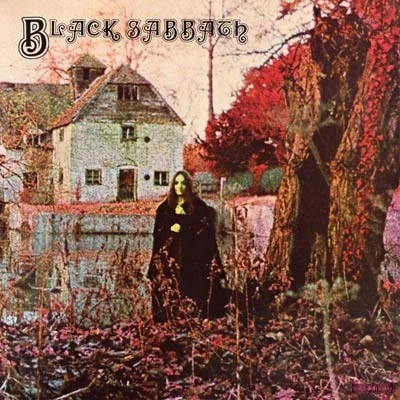 Have you ever wondered why the introductory guitar riff in the first song of Black Sabbath's debut album sound so eerie and foreboding? This is tritone. Tritone is an interval between two notes, formed from three whole-tone steps. For example from C to D, D to E, and E to F sharp, so the tritone lies between C and F-sharp. This creates a tension that wants to be resolved. The interval sits somewhere between a perfect fourth and a perfect fifth and is therefore also called an augmented fourth (with a sharp) or diminished fifth (with a flat) depending on context. Whatever. In the Middle Ages, music was supposed to be holy, harmonious and ordered. A dissonant interval went against this. Tritone was named diabolus in musica (the Devil in music). Some heavy-metalists claim that tritones were banned by the Catholic church because of its association with the Devil. The Devil was said to exist in a particular musical tone. An equally good as hard to kill story, but there's no empirical support that tritones were ever banned. Tritones were discouraged and avoided due to the strict rules of harmony observed by those composing for the Catholic church. Moreover, tritones, with their unpleasant dissonances, were difficult to sing in tune. Toni Iommi come up with the three-note passage after listening to Gustav Holst "Mars, The Bringer of War" (from the suite The Planets). The guitarist imitated the sound on guitar and liked the evil, sinister and unsettling feeling about it. Toni Iommi experimented with it, inverted it and slowed it down. The rest is history.
Have you ever wondered why the introductory guitar riff in the first song of Black Sabbath's debut album sound so eerie and foreboding? This is tritone. Tritone is an interval between two notes, formed from three whole-tone steps. For example from C to D, D to E, and E to F sharp, so the tritone lies between C and F-sharp. This creates a tension that wants to be resolved. The interval sits somewhere between a perfect fourth and a perfect fifth and is therefore also called an augmented fourth (with a sharp) or diminished fifth (with a flat) depending on context. Whatever. In the Middle Ages, music was supposed to be holy, harmonious and ordered. A dissonant interval went against this. Tritone was named diabolus in musica (the Devil in music). Some heavy-metalists claim that tritones were banned by the Catholic church because of its association with the Devil. The Devil was said to exist in a particular musical tone. An equally good as hard to kill story, but there's no empirical support that tritones were ever banned. Tritones were discouraged and avoided due to the strict rules of harmony observed by those composing for the Catholic church. Moreover, tritones, with their unpleasant dissonances, were difficult to sing in tune. Toni Iommi come up with the three-note passage after listening to Gustav Holst "Mars, The Bringer of War" (from the suite The Planets). The guitarist imitated the sound on guitar and liked the evil, sinister and unsettling feeling about it. Toni Iommi experimented with it, inverted it and slowed it down. The rest is history.
Featured
"Diabolus in musica"
Konztroll
Hits: 1329
